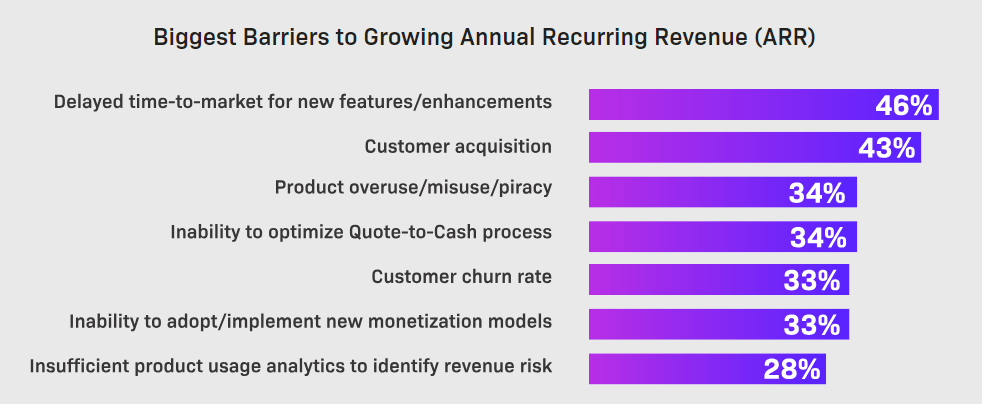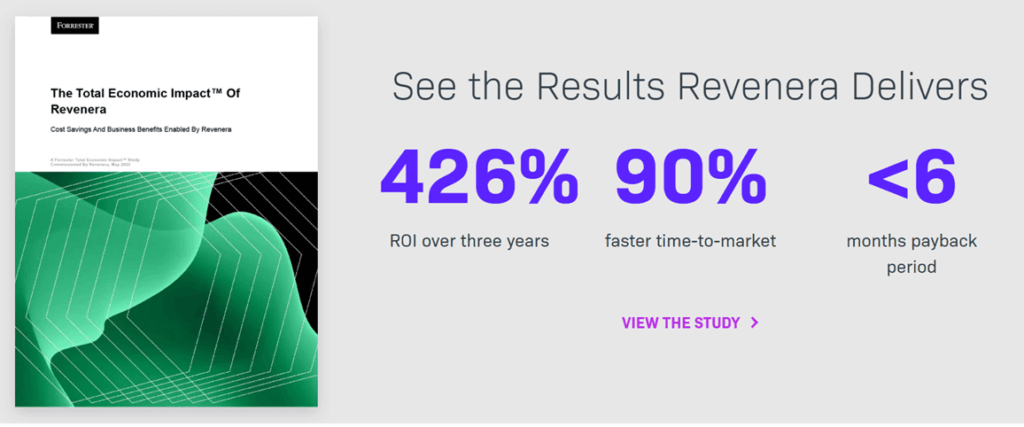Table of contents
Do not edit: TOC will be auto-generated
In the fast-moving world of tech, time is money, which is why product leaders should routinely ask how to reduce time-to-market.
Missed release dates are a common and costly issue. In fact, according to the 2025 Monetization Monitor, delayed time-to-market is the biggest barrier to revenue growth, identified by 46% of survey respondents.

Failing to launch new products, features, enhancements, or revenue models, such as usage-based pricing for SaaS and AI, can seriously impact sales and renewals, undermining customer confidence to give your competitors an edge.
However, delivery issues are widespread, with VDC Research reporting at least 34% of software development projects are behind schedule, as found in their 2024 ‘Voice of the Engineer Survey’ of 600 software engineers.

Reflecting on these two data points – delays being the biggest barrier to growth, yet one-third of projects being behind schedule – highlights the urgent need to tackle underlying issues and remove operational blockers as you focus efforts on reducing time-to-market.
5 Tips for Reducing Time-to-Market
Intrigued by this issue, I recently asked five Senior Product Managers how to reduce time-to-market for new releases, and this is their advice:
- Before you set the wheels in motion, you need to create a RACI chart specifying who’s Responsible, Accountable, Consulted, or Informed for each milestone. Centralized documentation helps your stakeholders stay on track, with clear expectations that ultimately shorten time-to-market.
- Whenever developing a new product or capability, you should work closely with beta customers who can test it, provide feedback, and help you tweak things along the way. Starting with a controlled group is crucial to ensuring proof of concept, helping you avoid major disruptions down the road.
- Avoid scope creep by defining a true MVP (Minimum Viable Product). It can be tempting to squeeze in “just one more thing,” but every addition creates complexity and delay. Align on what’s absolutely essential for launch, and park your nice-to-haves for future releases.
- If you have long sales cycles, announce the release ahead of time, perhaps by a quarter or two. Start drumming up interest before general availability, but don’t over-promise to prospects at advanced stages. Be open and share realistic timelines for onboarding, and they’ll respect your honesty. This helps you achieve a reduced time-to-market and hopefully start building pipeline, even if your product’s not technically ready.
- Empower your team to focus on the capabilities customers care about, rather than building and maintaining back-office infrastructure. The more time you spend reinventing the wheel, the less time you have for innovation, so if you’re serious about reducing time-to-market, you should integrate third-party technologies where it makes sense.
When it comes down to it, organizations that periodically review processes and create space for engineers to be laser-focused on core product development will always be more successful in meeting release goals.
Leadership teams often debate the build or buy software decision, with many believing everything should be produced in-house. However, as noted above, leveraging specialized third-party tools can help ensure a low time-to-market.
As it happens, industry analysts recently stated Revenera’s flexible monetization platform delivers a 90% reduced time-to-market for new revenue strategies.
How to Reduce Time-to-Market: TEI Study
Forrester Consulting interviewed four technology executives from a range of industries to compile a Total Economic Impact™ Study of Revenera, which showed a 426% ROI over three years with a payback period of under six months.
The in-depth study is a must-read for anyone looking to grow recurring revenue, with fascinating insights on SaaS transformation journeys and how to reduce time-to-market for new offerings.
Here’s a quote from one of the interviewees:
“Implementing licensing and entitlement systems for new products could take over a year [in the prior environment]. We had to figure out how to integrate with order management systems, build a front-end interface, and create an administrative tool for managing licenses. Although the overall project may span several months with different components occurring at different times, the time required to enable licensing and entitlement now takes only one month.
“The value here is clear: We’re able to do in a month what used to take over a year. Now, when we onboard a new product, it’s just a small portion of our standard work process, rather than a major challenge that we need to figure out. Previously, this was considered a high-risk area of our development process, but now, it’s a well-established part of each project. It means we can launch new products faster.
“Before Revenera, we would have had to wire things together, test in production and QA, and verify that the new license worked, which was a much more complex and time-consuming process. Now, for products that are already onboarded and have their licensing and entitlement systems set up in Revenera, adding a new license takes just a few minutes. You simply open Revenera, enter the new SKU, and it’s done. Of course, there are additional steps, like updating our ERP system, but overall, the time required is drastically reduced compared to before.” – Product Manager, Manufacturing
In addition to reducing time-to-market by 90%, the TEI study estimates Revenera’s automated software licensing solutions and entitlement management capabilities would gain the composite organization $106 million in incremental revenue for new product releases over three years.
Dynamic Time-to-Market Innovation
As competition heats up and monetization trends rapidly evolve, leading tech companies are focusing on time-to-market innovation to get ahead.
Those who bring new releases to market early gain first-mover advantage – generating revenue, improving company valuations, and strengthening renewals, especially in those tricky “What have you done for lately?” conversations with customers who like to negotiate.
Revenera enables the broadest range of flexible software monetization models, with out-of-the-box functionality and easy API integrations to help you reduce time-to-market, meaning you can streamline operations while prioritizing development to address customer needs and create value.
Common Questions
Why is reducing time-to-market critical for technology companies?
Delayed time-to-market is the biggest barrier to revenue growth, identified by 46% of respondents in the 2025 Monetization Monitor. Missing release dates for new products, features, or monetization models can undermine customer confidence, slow sales, and give competitors an advantage.
What practical steps can help reduce time-to-market?
Experts recommend creating a RACI chart to clarify responsibilities, working with beta customers for early feedback, defining a true Minimum Viable Product to avoid scope creep, announcing releases early to build a pipeline, and leveraging third-party technologies instead of building everything in-house. These actions help streamline processes and keep teams focused on core product development.
How does Revenera’s platform impact time-to-market?
Revenera’s flexible monetization platform reduces time-to-market for new revenue strategies by 90%. One user reported that it enabled licensing and entitlement setup in about one month, instead of over a year. This efficiency helps organizations launch products faster, gain a first-mover advantage, and generate significant incremental revenue.
Discover more in this short video:
You’re Invited! Join Eaton’s Eric Patalinghug for this webinar:
Accelerating Time-to-Market for New and Acquired Products
WATCH NOW
If you’d like further advice on reducing time-to-market with specialized software monetization solutions, please contact us to arrange a call.






